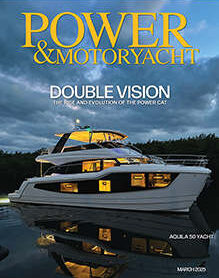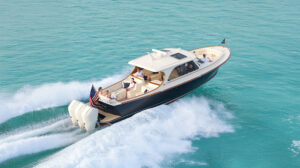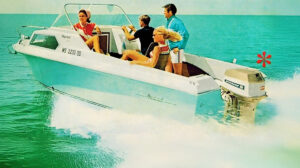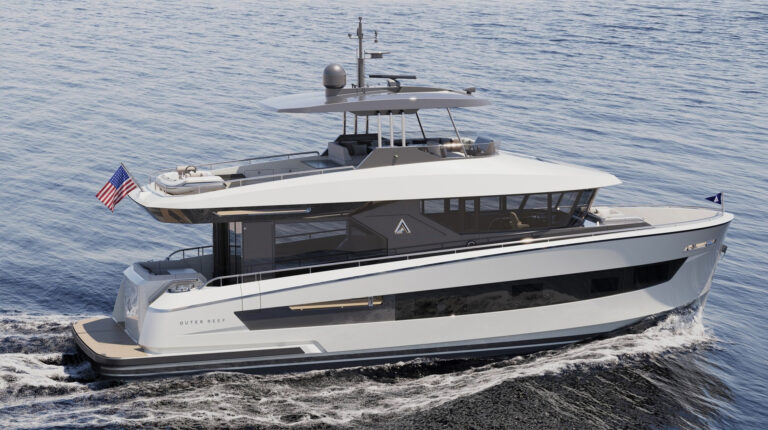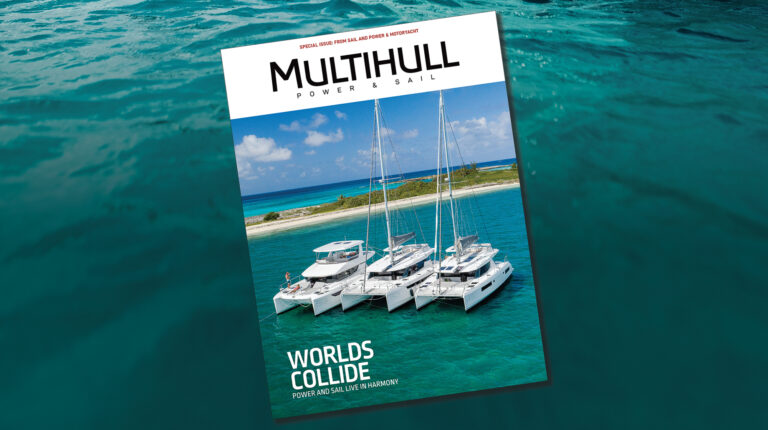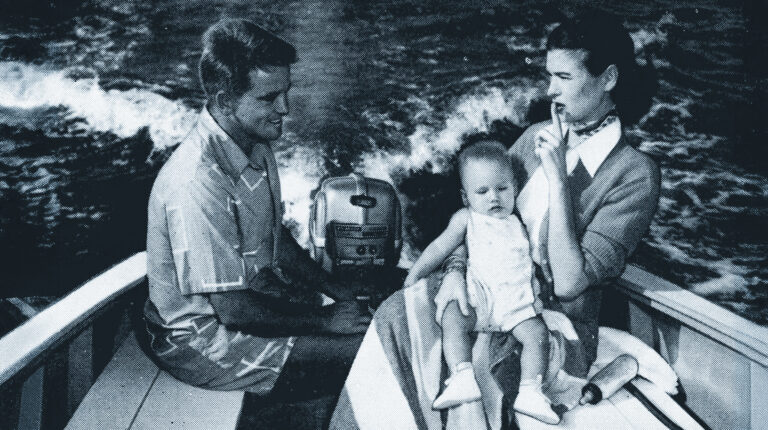Sightlines – November 2013
Necessary Danger

A newer, edgier America’s Cup—sailing on steroids!
I know, I know, this is a powerboat publication and boaters have been contentiously divided along the lines of power versus sail ever since the first powerboat wake filled the cockpit of a sailboat sometime early in the last century. So why am I writing about sailing and the America’s Cup? Because this year’s festivities have re-invented our very idea of sailing. Like every other aspect of our modern world, we have been up-ended by technology.
Historically, America’s Cup boats have represented the epitome of sailing prowess and technology, but they’ve only posted speeds like 8 knots upwind and 12 knots downwind. About as fast as a powerboat in a no-wake zone. But gone are the days of J-Boats, 12-Meters, and IACC’s. The rules have been re-written by current Cup holder Larry Ellison, owner of software giant Oracle and the world’s fifth richest man, according to Forbes.
High technology has come to sailing in the form of the new AC72’s, sporting carbon-fiber catamaran hulls, rigid wing sails, and J-shaped hydrofoil dagger boards. Instead of slogging around the course at displacement speeds, they fly on their foils, ripping through the water and shooting up rooster tails at speeds up to 47 knots. They’re amazing to watch as they fly on a single foil and rudder, with hulls completely out of the water. Already maxing out the potential of conventional hydrofoils, the only way forward for these boats is super-cavitating foils, the stuff of super-sonic jets.
If you think sailing such boats would be boring, I doubt you’ve got a powerboat that will run as fast. At 15,000 pounds, you’d need the equivalent of a 40-foot, stepped-hull center console with twin 350-horsepower outboards just to keep pace. Their 130-foot wings are larger than those of a Boeing 747’s and enable them to go two to three times faster than the speed of the winds they’re racing in. They can run 40-plus knots in less than a 20-knot breeze and make their own wind as they go. The faster they go, the faster they can go.
This past spring, the America’s Cup competition suffered the death of a crewmember aboard the Swedish challenger Artemis when it capsized during trials. As a result, the maximum wind speeds for racing were lowered and safety modifications were made. Some sailors criticize the danger inherent in these new boats and want to tame them down, but name any racing sport where the danger of death is not a factor and I will name you a sport that no one watches. Like it or not, danger is a necessary thing if you want the Cup to survive and appeal to spectators other than those wrapped in tradition. The cat is out of the bag, so to speak, and now that we have seen these freaks of speed, the sport can never go back.
In custom yacht-building circles, aligning carbon fiber with pre-preg, vacuum-bagged, oven-cured composites is known as “America’s Cup Technology.” We latched onto all this stuff about 20 years ago with America’s Cup builders like Tencara while developing our 150- and 200-mph championship offshore racing boats, leaving aluminum construction behind forever. Will this new AC technology trickle down to powerboats as other technologies have done? We have no use for a wing, but the foils! They are intriguing and I am sure we will see a surge of foil-assisted powerboats in the future. Surely there’s a challenge here for powerboats to catch up and gain efficiency after we’ve all seen what sailing has achieved.
On September 26, 1983, I was visiting Palmer Johnson Yachts, discussing the construction of a large, fast yacht with John Staluppi. It was the day America lost the Cup for the first time ever, to Australia II, with its breakthough winged keel. Thirty years later to the day, I am writing this column one hour after the American yacht Oracle Team USA retained the Cup after being down eight to one to Emirates Team New Zealand, coming back to win the best of 17 series nine to eight. It was the most incredible sailing competition I have ever seen, with the most incredible sailing technology imaginable. Thirty years from now, I think we’ll see new technologies and even higher speeds in the America’s Cup, and there’ll be danger there too, but necessarily so.
This article originally appeared in the November 2013 issue of Power & Motoryacht magazine.

